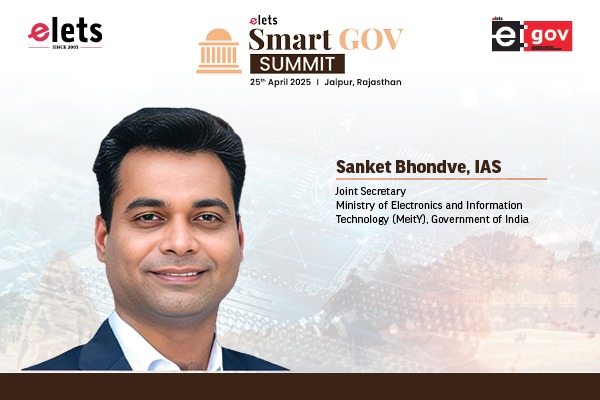
In any organization, there has always been a pressing need to automate the processes to enhance the quality and quantity of output, reliability, reduction in operation and maintenance costs, ease of accessibility, transparency, performance analysis, etc. In Indian Railways too, hitherto operations and maintenance of major general services electrical assets, monitoring of electrical energy is mostly manual and wherever IT applications are being used, they are in disintegrated form, i.e. division and vendor specific. A need is being felt for centralized monitoring, integration of data and analysis. There must be a proper information system for taking coordinated decisions based on historical data analysis and future performance benchmarking.
Information is kept in registers by field staff, hence while the accuracy and timeliness of the information are uncertain, it is also difficult to review and compile the information for efficient and timely decision-making. Railways have taken certain automation initiatives but these are in silos without any centralized approach. There has to be a standard and secure way of getting data related to electrical assets and energy management from various divisions/zones on a real-time basis.

In order to have standardization, optimal utilization of data collected, security as well the privacy of data, it was proposed that data from smart devices (IoT devices) is communicated securely and directly to IR’s own IT application i.e. IR- NIYANTRAC (Indian Railways Native IoT based Yield Analysis Telemetry Recording And Control) for purpose of MIS, data analysis, preventive maintenance, resultant action through field actuators, providing SMS/E-Mail reporting to various stakeholders as well as act as a single bridge for integration with other IR IT Applications viz. Railsaver, etc.

IR-NIYANTRAC shall be a complete application platform that shall be deployed by CRIS for monitoring and control of electrical assets and energy. Besides mapping existing assets, it shall have the capability for the addition of new assets with different sensor types that can be integrated with diverse types of instruments which shall be installed from time to time in various electrical assets of Indian Railways.

The platform will enable Indian Railways to not only efficiently monitor its real-time energy usage across various zones/divisions in a standardized way but also provide a unified data analysis platform for identifying wastages, setting new targets and monitoring performance with predictive analysis. It will also enable Indian Railways to have a central asset repository system, rather than automation and digitalization in disconnected silos as this System will be hosted in CRIS Cloud.

Also Read | Driving Digitisation: CRIS’s Role in Modernising Indian Railways
For effective and real-time monitoring of Data through the IR-NIYANTRAC Application, the following systems are initially being linked to the application:
1) All energy inflows and outflows are required to be monitored so that the energy consumption is established holistically. Hence there should be smart IoT-based energy sub-metering at all major Electrical distribution points.
2) Real-time monitoring and control of pumps with sensor monitoring like continuous water level monitoring in OHTs/UGTs, pressure, flow, etc.
3) Operational status, energy consumption and/or health parameters of the assets like lifts, and escalators.
4) Automated internet-based monitoring and control of street light feeder pillars and High Masts.
5) 30%-70% lighting control at stations which shall be integrated with National Train Enquiry System (NTES) for automatic switching on/ off lights based on train arrival and departure.
The central IT infrastructure shall be deployed and managed by CRIS and installation of IoT devices, and sensors with different assets would be done by Zonal Railways through open competitive bidding. Presently, a pilot project has been undertaken by North Western Railway (NWR) in PH-36 in Umbrella work of 2022-23, PB No. 1026, viz., “Improvement/upgradation of electrical assets of General Services over Indian Railways”.
Advantages of IR-NIYANTRAC application:
- Ensure perpetual monitoring of assets – not vendor / Railway specific
- Comparative performance analysis across different Railways, Makes, Model numbers, etc.
- Centralized monitoring at different levels for coordinated decision making
- Adoption of best practices
- Access-based remote controlling – manpower & time saving
- Asset health monitoring for timely pre-emptive action – facilitate predictive maintenance
- Data analysis – Load profile, Usage analysis
- Prevents resource wastage – human, water, energy
- Tool to increase uptime of assets
– Alerts System with escalation levels - Optimal utilization of installed assets
- Reduced cost of maintenance – forecasting actual requirement of spare parts, manpower
Indian Railways has set an ambitious target of achieving “Net Zero Carbon Emission” by 2030. Energy efficiency is one of the major strategies for achieving this target. In the recently issued energy efficiency policy by Railway Board, “Cloud-based centralized web portal for data monitoring and management” is one of the action points. Monitoring of energy consumption by different assets can be done through this application and coordinated decisions can be taken for minimizing energy consumption, thus helping to achieve the target of Net Zero Carbon Emission.
Views expressed by Sumit Garg, General Manager (Electrical Projects & Data Centre), Centre for Railway Information Systems (CRIS).
Be a part of Elets Collaborative Initiatives. Join Us for Upcoming Events and explore business opportunities. Like us on Facebook , connect with us on LinkedIn and follow us on Twitter, Instagram.
"Exciting news! Elets technomedia is now on WhatsApp Channels Subscribe today by clicking the link and stay updated with the latest insights!" Click here!













